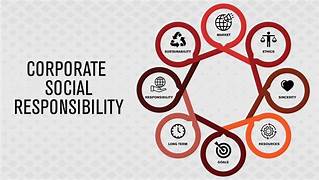Exploring the Balance Between Profit and Social Responsibility in Impact Investing
Impact investing is transforming the financial landscape by aligning profit motives with positive social and environmental outcomes. Unlike traditional investments focused solely on financial returns, impact investing seeks to generate measurable benefits for society and the planet while still delivering competitive profits. This dual mandate of profit and social responsibility presents unique opportunities and challenges for investors, businesses, and policymakers.
In this article, we explore the origins of impact investing, its role in balancing financial returns with social responsibility, the methods for measuring impact, and the challenges and future prospects of this growing investment approach.
Understanding Impact Investing
Impact investing is defined as investments made with the intention of generating positive, measurable social and environmental impact alongside a financial return. This approach emerged as a response to the limitations of traditional philanthropy and corporate social responsibility (CSR) efforts, offering a sustainable and scalable way to address global challenges.
Key Characteristics
- Intentionality: Investors deliberately aim to create positive outcomes, targeting areas such as education, healthcare, clean energy, and affordable housing.
- Measurability: The social and environmental impact must be quantifiable using standardized metrics.
- Financial Returns: Impact investments aim to provide returns ranging from below-market to market-competitive levels, depending on the investor’s goals.
Profit and Social Responsibility: A Delicate Balance
Balancing profit and social responsibility is the cornerstone of impact investing. While these objectives are often seen as conflicting, impact investing proves they can be complementary when approached strategically.
1. Profit-Driven Social Change
Impact investing demonstrates that profitability and positive impact are not mutually exclusive. For example:
- Renewable energy projects, such as wind farms and solar power, generate financial returns while reducing carbon emissions.
- Microfinance institutions provide loans to underserved communities, enabling economic growth and financial inclusion.
2. The Role of Private Capital in Social Responsibility
Private capital plays a critical role in addressing social and environmental challenges, especially where public funding and philanthropy fall short. By investing in innovative solutions, private investors can drive scalable change while earning returns.
3. Challenges in Balancing Objectives
Achieving the right balance is not without its challenges. Investors may face:
- Trade-offs: High-impact projects may require below-market returns or involve higher risks.
- Impact Dilution: Overemphasis on profitability can compromise the depth of social impact.
- Measurement Difficulties: Quantifying impact remains complex, making it harder to evaluate the effectiveness of investments.
Methods for Measuring Impact
The success of impact investing depends on robust measurement frameworks that ensure accountability and transparency. Commonly used methods include:
1. Impact Reporting and Investment Standards (IRIS)
IRIS provides a standardized framework for measuring and managing impact performance, allowing investors to compare results across projects and sectors.
2. Environmental, Social, and Governance (ESG) Criteria
ESG metrics evaluate a company’s practices and policies, assessing its impact on stakeholders and the environment. These criteria are widely used in sustainable and impact-focused portfolios.
3. Social Return on Investment (SROI)
SROI quantifies the social value created by an investment, assigning a monetary value to the impact for easier comparison with financial returns.
4. Sustainable Development Goals (SDGs)
The United Nations’ SDGs serve as a global benchmark for impact investing, guiding investments toward addressing pressing global challenges like poverty, inequality, and climate change.
Key Sectors for Impact Investing
Impact investing spans various sectors, each offering unique opportunities to balance profit and social responsibility:
1. Renewable Energy
Investments in wind, solar, and other clean energy technologies reduce greenhouse gas emissions while delivering strong financial returns as global energy demand shifts toward sustainability.
2. Healthcare
Innovations in healthcare, such as telemedicine platforms and affordable medical devices, improve access to care in underserved areas while driving business growth.
3. Education
EdTech startups and community-based education programs address gaps in access and quality, particularly in developing regions, while generating sustainable revenue models.
4. Affordable Housing
Impact funds that invest in affordable housing projects combat homelessness and housing insecurity, generating stable, long-term returns for investors.
5. Agriculture and Food Security
Investments in sustainable farming practices and technologies enhance food security, promote environmental stewardship, and open up new market opportunities.
Challenges in Impact Investing
Despite its potential, impact investing faces several hurdles:
1. Measuring and Verifying Impact
Standardized metrics are essential but often lack consistency, making it challenging to compare impact across projects and sectors.
2. Limited Market Awareness
Many investors remain unfamiliar with impact investing or perceive it as less profitable than traditional options, limiting its adoption.
3. Risk Perception
Impact investments, particularly in emerging markets or untested technologies, can carry higher perceived risks, deterring conservative investors.
4. Balancing Stakeholder Expectations
Meeting the demands of stakeholders with diverse priorities, such as maximizing returns versus maximizing impact, requires careful negotiation and alignment.
5. Regulatory Barriers
Inconsistent regulations and policies across regions can hinder the growth of impact investing markets, particularly in developing countries.
Future Prospects and Innovations
The future of impact investing lies in addressing these challenges and leveraging innovations to enhance scalability and effectiveness. Key trends include:
1. Integration of Technology
Technologies like artificial intelligence, blockchain, and big data are revolutionizing impact measurement and management. Blockchain, for instance, enhances transparency in reporting, ensuring accountability in achieving impact goals.
2. Increased Collaboration
Public-private partnerships and cross-sector collaborations can pool resources and expertise to amplify impact. Governments, NGOs, and businesses must work together to create a supportive ecosystem for impact investing.
3. Expanding Retail Investor Access
Making impact investing accessible to retail investors through mutual funds, ETFs, and robo-advisors can democratize opportunities for individuals to participate in social and environmental change.
4. Alignment with Global Goals
The continued alignment of investments with the UN’s SDGs will focus capital on addressing the world’s most pressing challenges.
5. Rise of Green Bonds and Social Bonds
These fixed-income securities are gaining popularity among institutional investors, offering a clear and measurable way to finance impactful projects.
Conclusion
Impact investing represents a paradigm shift in how we view the relationship between profit and social responsibility. By proving that financial returns and positive societal outcomes can coexist, it challenges traditional notions of investing and philanthropy.
However, achieving this balance requires careful planning, robust measurement frameworks, and a willingness to embrace innovation and collaboration. As the field evolves, the potential for impact investing to drive meaningful, sustainable change on a global scale becomes increasingly evident.
Investors, businesses, and policymakers have a shared responsibility to harness the power of impact investing, ensuring it becomes a cornerstone of a more equitable, sustainable, and prosperous future for all.


